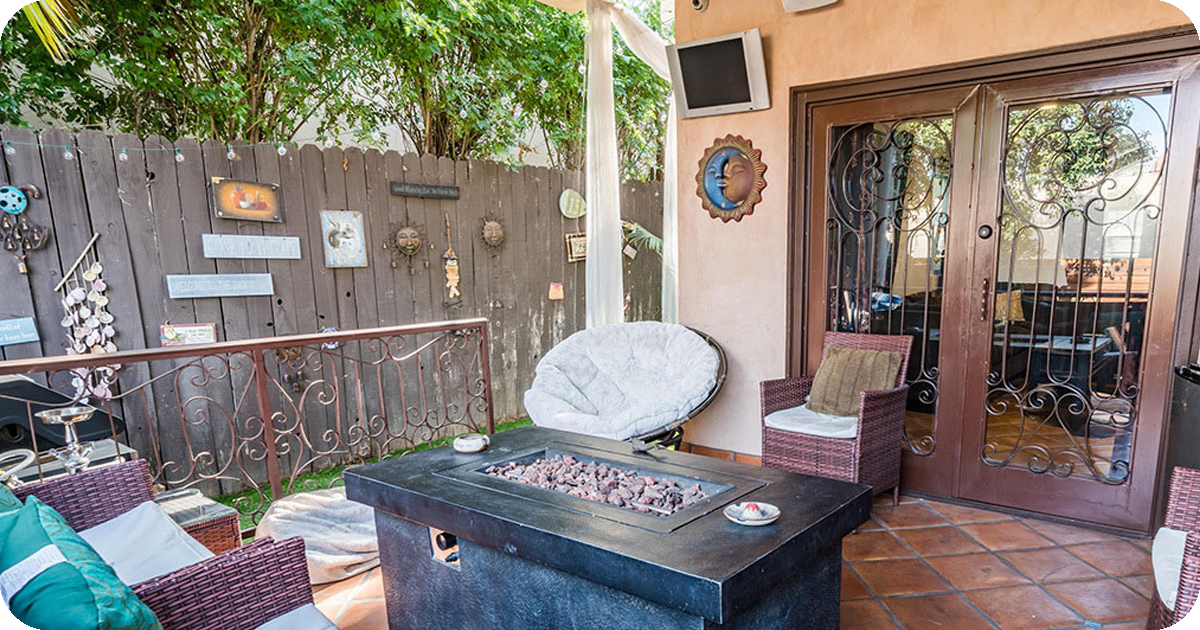The primary purpose of a sober living home is to exist as a drug and alcohol free living space. It’s an environment to allow those suffering from or recovering from substance use disorders to begin or continue sober living. This environment is created with community support, recovery principles, and personal responsibility in mind.
Generally, sober living homes are privately owned and rented to those recovering from substance use. The goal is to create a peaceful and non-stressful home where residents can work towards growth and healing before eventually returning home or to an independent living situation with strengthened recovery.
Sober living homes not only provide a safer environment, but they also provide a support system supplemented by other individuals experiencing similar issues. This scenario also encourages residents to hold each other accountable for continued sobriety and recovery. Sober living homes also allow people to continue to address their rehabilitation and long-term health after working their way towards recovery in substance use disorder (SUD) rehab. Battling substance use disorders is a long-term struggle, and creating a supportive environment allows people to find growth outside of substance use.
Communal and clean living environments are shown to improve the strength and length of sobriety. Additionally, residents have shown improvements regarding mental health symptoms, increased gainful employment, and fewer arrests. By receiving support from an understanding community, recovering individuals learn to heal and communicate, as well as learn effective coping methods and confidence in their ability to recover.
The Difference Between Sober Living Houses and Halfway Houses or Rehab Centers
Though they may seem similar, sober living homes are different from rehab centers and halfway houses. Halfway houses require formal rehab treatment before entry, and rehab centers exist to provide extensive inpatient or outpatient programs for recovery, with strict regulations for the completion of the program.
Typically, residents can only stay in rehab centers and halfway homes for a certain amount of time (often 90 days for inpatient rehab centers and twelve months for halfway homes). The time limits imposed on halfway houses exist by necessity, to free up space for newly sober residents. This is often done whether the person recovering is prepared for independent living or not. Halfway houses often rely on government and treatment program funding, so they are at risk for budget cuts.
Sober living homes and a sober living community aren’t as strict, though they still carry measures to hold those recovering accountable for their continued recovery. However, residents have freedom to leave and enter the home whenever they wish, and residents are not usually required to complete a rehab program first. It’s important to know that rehab programs can offer tools and skills that enhance the success an individual can find in a sober living home.
The main goal of a sober living home is to bridge the gap between rehabilitation and living a substance-free and independent life. Residents must pay rent in a sober living home, and will have more responsibility both within and outside the home than they likely would during a rehab program. For example, residents must often hold a job or continue their education. Other responsibilities in a sober community could include completing chores and displaying general respect and responsibility for other house rules.
Who Regulates Sober Living Homes?
Some sober living homes have an owner or manager who manages the home and enforces the rules. However, most sober living homes, including those at Stairway Recovery Homes, focus on a social model of community leadership. This model and the responsibility it implies can help members feel more control over their living situation and improve their trust in themselves.
The most essential rule of a sober living community is straightforward: residents must stay sober. If a member uses alcohol or illicit substances while a resident of a sober living home, they could be asked to leave. They are breaking the most important rule and could be affecting the recovery of others in addition to their own.
However, members who are up front about relapse and honest in explaining their situation may receive only a suspension before being allowed to return. In all cases, the individual must truly display the desire to continue work towards recovery.
Phased Sober Living
Many sober living homes utilize a tiered or phased structure:
Phase 1 (Days 1 to 30):
- Strict curfews
- A minimum of five 12-step meetings a week
- Obtaining a sponsor
- Willingness to participate in mediation and mindfulness practices
- Counseling and support
- Completing daily chores
- Must pass regular substance screenings
Phase 2 (Days 30 to 90):
- Attend job coaching sessions
- Begin to attend school, work, or volunteer work
- Continue attention to fitness and wellness
- Continue to pass regular substance screenings
Phase 3 (Months 3 to 6):
- Begin to mentor newer members
- Perform some type of volunteer work in the community
- Prioritize budgeting and finances
- Continue to pass regular substance screenings
Do Sober Living Homes Work?

There are a number of benefits to sober living homes, and they are proven clinically effective in improving the lives of those recovering from substance use. The living environment provided by a sober living home creates encouragement, support, understanding, and accountability among members. This structure of support can significantly influence positive changes in mental, physical, emotional, and behavioral health.
Other common improvements experienced by those in sober living homes include:
- Improvement of physical health and wellbeing
- Better emotional and mental health
- Better familial relationships
- Higher satisfaction in life
- Better employment prospects
- Increased access to education and job training
- Fewer incarcerations
Sober Living FAQs
Q: How Long Should Residents Stay in a Sober Living Community?
A: Typically, residents who follow the rules of the house can stay as long as they need and as long as they want. Every individual faces a different journey and a different set of challenges while overcoming substance use disorder. The length of time substance use treatment and recovery take can also impact the amount of time needed in a sober living home.
Q: What Is the Cost of Sober Living?
A: Renting a room in a sober living community ranges as much as any other housing option. Depending on location, the cost of living in the area, and the amenities offered, rent may be anywhere from $500-$5,000 a month.
Q: Does Insurance Cover Sober Living?
A: Generally, insurance doesn’t cover the cost of sober living housing. Because the homes are often privately owned and financially independent, it’s not considered a mental health treatment center, and most don’t accept insurance. Insurance may cover other therapies and treatments for substance use disorders, however.
Q: How Do I Find the Right Sober Living in LA?
A: It’s important to look for substance-free homes that are located in stable, safe, and stress-free areas. Individuals need to look for stable living environments that will foster their recovery and long-term sobriety. In addition, look for a safe, clean facility that prioritizes building a productive and helpful support system.
You’ll also want to choose a safe location that isn’t geographically close to the initial environment that caused or aided your substance use or relapse. Unfortunately, sometimes a person’s family and friends are standing in the way of their recovery, so being away from those people or places that may trigger relapse is useful. Many sober living homes are in safe neighborhoods, and that’s ideal for a stress-free living environment.
Q: What Are Some Sober Living Red Flags?
A: An unhelpful environment can severely affect your ability to continue recovery. Some warning signs that a sober living home isn’t well-managed to promote recovery include:
- A lack of rules or regulations
- No precautions or provisions for safety and privacy
- Unsafe buildings
- No regulatory inspections
- Uncertified staff
- No drug or alcohol screenings
- No requirements for applications
- Doesn’t require sobriety
Find Your Ideal Sober Living Home in LA

As you or a loved one works through the journey to recovery, it’s incredibly important that you feel safe and supported. Recovering from substance use disorder takes dedication and an environment that promotes responsibility and accountability. Find the space that allows you to step away from old habits and toward the accountability you need to grow and reclaim your life.
When people attend Stairway Resource Center to recover, they often live in sober living homes. Stairway Recovery offers these individuals a gender-specific house to stay in while working on recovery from addiction. By partnering with Stairway Recovery, Stairway Resource Center can expanded our outpatient services. Sober living l enables individuals enrolled in our program to live in a safe, affordable, and supportive environment. Contact us anytime to learn more.

Therapist
Cristina is a bilingual clinical social worker with over 10 years experience working in the field of mental health and addiction, both in the non profit and private sectors. Cristina received a diploma as a certified substance abuse counselor before returning to school to receive a Masters Degree in Social work at USC. Cristina uses a client-centered trauma focused approach in her treatment modalities, blending evidenced based practices such as CBT and EMDR to create an individualized treatment plan to support each client’s unique needs.





















